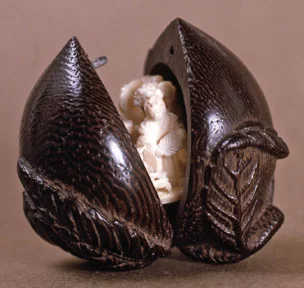Ad Code
Translate
List of 6,000+ Dofollow Commentluv Blogs FREE (Updated 2025)
January 16, 2025
What is Ozempic (semaglutide)? (Updated in 2025)
January 30, 2025
How To Find Suitable Properties In Cyprus? (Updated in 2025)
January 11, 2025
Smart strategies for trading on crypto exchanges
April 23, 2025
All You Need To Know About Buying Quality Netsuke
Khabza Mkhize
August 16, 2019
Netsuke are tiny sculptural objects that gradually developed from Japan about three hundred years ago. The popularity of netsuke has led to the emergence of various fakes in the market. Fake netsuke is mass-produced to benefit from the ignorant market. It requires a trained eye and knowledgeable person to discern fake netsuke from the real one. These fakes come in ivory or plastic and are usually sold in souvenir stores and antique shops.
The market is filled with 18th and 19th-century netsuke copies defrauding unsuspecting customers thousands of dollars. Earlier netsuke copies from the 19th century carved by Japanese artists were made to meet demand from European collectors. The original and fake copies of these wonderful works of art come with a significant difference in value. You need to understand how to tell real from fake netsuke to make the most from your investment.
How to tell genuine netsuke
Low-quality netsuke for beginner art enthusiasts has meaningless squiggles carved to resemble genuine signature netsuke. It might also be made to look like actual netsuke made by brand name Japanese artists. Fake netsuke might bear poor reproductions of popular artists’ signatures in a bid to hoodwink novice art collectors into paying huge sums for them.
Professional evaluation is necessary to tell the best erotic netsukes from fake options. You have to visit a reputable art store for genuine netsuke. These usually have useful information to give you enough information that will help you to make an informed decision when investing in netsuke. Another idea is to invest in some books or join an international netsuke society to associate with people more knowledgeable about the netsuke-collecting hobby. You should also attend art conventions to interact physically with other collectors for first-hand information.
Important considerations when purchasing netsuke
Authenticity
Not anyone can tell authentic netsuke from a fake one. The artist’s signature is the easiest way to tell genuine netsuke. This is located on a small area of the item although fake alternatives might also come with signs as well. It requires a seasoned art collector to tell the authenticity of netsuke and to accurately tell its age, signature, material, stroke, and artistry. Professional art collectors have expertise and years of experience handling netsuke to tell genuine netsuke.
Artistry
Netsuke is not always the same. Its appearance tells the artistry skills of the artist who made each piece. It takes a seasoned collector to distinguish between the levels of skill of the artist who made that particular netsuke. These pieces come as simple carvings, complex designs, and minutely detailed options. The beauty of netsuke comes from the artist’s skill at making the carving.
Condition
It is obvious that genuine netsuke is hundreds of years old. When investing in netsuke, it is important to mind about age cracks, wear, restoration, and chips. This might happen to netsuke over time. It is obvious that damage affects netsuke value although it might also depend on other factors like rarity and age. It is okay for netsuke to show signs of wear although it should not be advanced enough to lower its value. Professional art collectors agree that minor cracks, tiny repairs, surface erosions, and little defects are acceptable since they have a direct relationship with netsuke age.
Rarity
All netsuke is not the same. It comes in various themes and the rarest is the more desired. Netsuke with forms of the mythical beast Baku and that of the squirrel doesn’t attract the same level of interest. It is no wonder that some collectors specialize according to options like legends, animals, erotic connotations, and mythical objects when investing in netsuke. You have to be willing to pay whatever it takes to get your preferred netsuke pieces.
Carving school
Highly sought-after netsuke was made by artists from particular schools in Japan including Tomiharu, Tomokada, Kokusai, Toyomasa, and Okatomo. Novice collectors might not understand this but seasoned collectors look for this when buying netsuke. Students from such popular schools made netsuke in a particular style that became more popular than others. It is no wonder than seasoned collectors can tell the school from where the artist came from by attributing particular attributes to the pieces.
Price
Finally, all the factors above can significantly affect netsuke price. The popularity of the artist, the rarity of the piece, and artist school are some of the factors that affect netsuke price. Additionally, novice collectors might pay top dollar for fake pieces not worth their value. The general rule of thumb is that the presence of the artist’s sign on the item has no effect on the item’s value and nor does the material. Originality and artistic appeal make a significant impact on how much you are likely to pay for netsuke.
Bottom line
Netsuke is a wonderful investment and a home décor item. However, you have to understand the right way to tell genuine netsuke from fake options.
Featured Post
12 Prominent new technologies and trends emerging in 2025
Khabza Mkhize-
April 02, 2025
Soapie Teasers
Sister Sites
Most Popular
List of 6,000+ Dofollow Commentluv Blogs FREE (Updated 2025)
January 16, 2025
Smart strategies for trading on crypto exchanges
April 23, 2025
Popular posts
List of 6,000+ Dofollow Commentluv Blogs FREE (Updated 2025)
January 16, 2025
Smart strategies for trading on crypto exchanges
April 23, 2025
Footer Menu Widget
Created By Blogspot Theme | Distributed By Gooyaabi Templates


Social Plugin